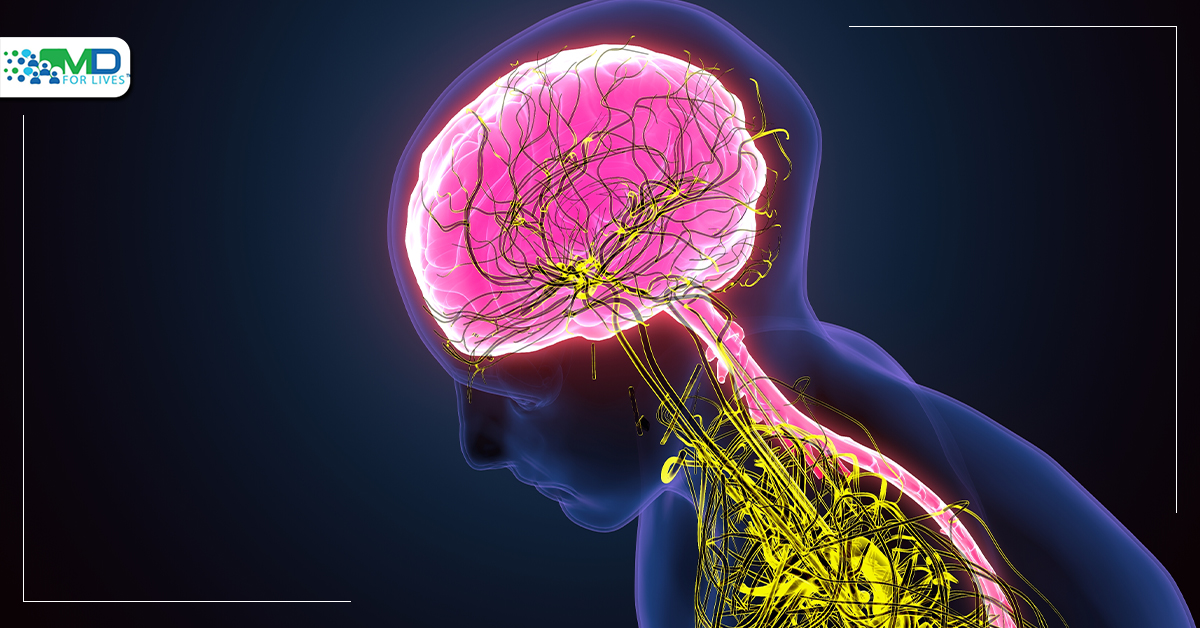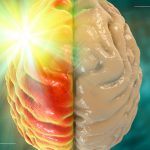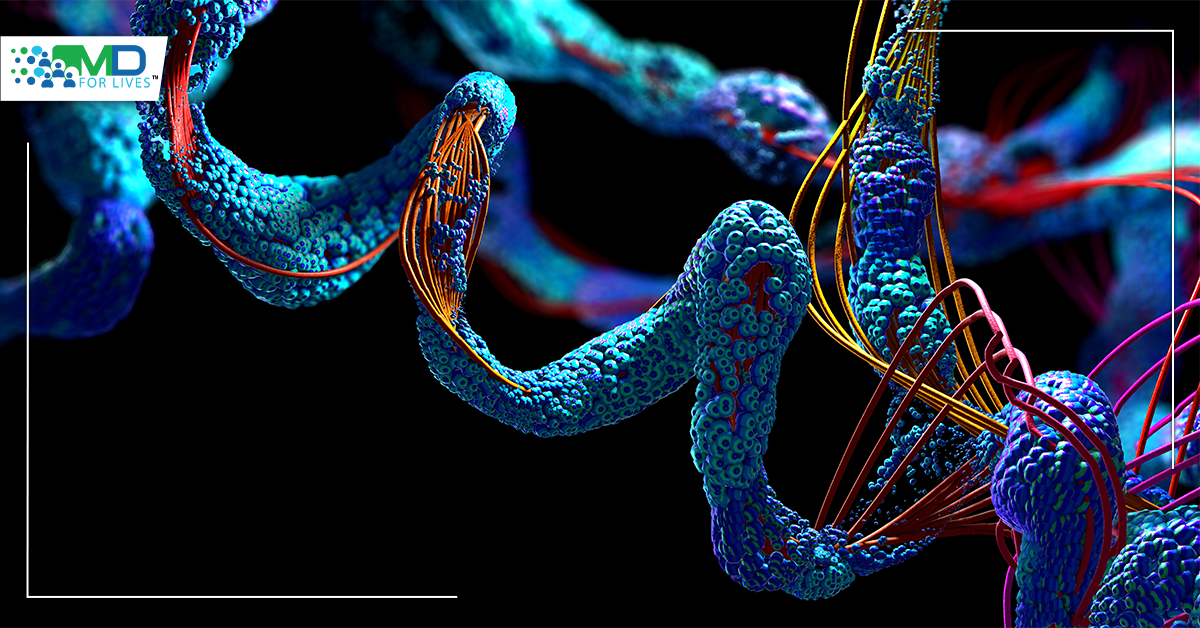The nervous system is a complicated mechanism that controls and organizes all bodily functions. It is a collection of nerves and specialized cells known as neurons that transfer messages between various bodily areas. The nervous system is divided into two parts: the central nervous system (which includes the brain and spinal cord) and the peripheral nervous system (neural elements). The brain, spinal cord, and a complex network of neurons make up the nervous system.
The process of neurulation, which occurs after gastrulation and results in the development of the neural tube, is the first step in the building of the nervous system. The notochord secretes signaling factors during week three of development to cause the change of the overlaying ectoderm to neuroectoderm and the establishment of the neural plate. The neural tube is generated by folding and closing the neural folds.

Central nervous system cannot repair itself after injury
Many organs and tissues in the body can heal on their own after being injured. Unfortunately, certain central nervous system cells are so specialized that they are incapable of dividing and producing new cells. As a result, it’s considerably more difficult to heal from a brain or spinal cord injury.
The central nervous system’s intricacy makes forming the proper connections between brain and spinal cord cells extremely difficult. Scientists face a major difficulty in re-creating the central nervous system that existed before the injury.
How the nervous system is the key to maintain a healthy body?
Nearly every element of our health and well-being is influenced by the neurological system. It directs simple actions, automatic behaviors, and complicated ones.
The nervous system controls various functions of the body such as
- Brain growth and development, aging
- Sensation, perception, and body temperature
- Thought and emotions
- Learning and memory
- Hunger, thirst, and digestion
- Movement, balance, coordination, and sleep
- Healing and rehabilitation
- Stress, breathing, and heartbeat
- Puberty, reproductive health, and fertility
Healthy habits for the nervous system
Exercise: Researchers have discovered that neurological health is a two-way street between our muscles and the rest of the environment. New research demonstrates that neurological health is influenced as much by signals provided to the brain by the body’s major leg muscles as it is by commands from the brain to the muscles. According to the findings, the legs, especially in weight-bearing exercises, transmit messages to the brain that are critical for the formation of healthy neural cells, which are necessary for the brain and nervous system. Cutting back on exercise makes it more difficult for the body to develop new nerve cells, which are the building blocks that allow us to cope with stress and adapt to new situations.
Nutrients for the nervous system: Calcium and potassium, as well as vitamins B1 and B12, are essential for a healthy neurological system. Healthy diets, such as those high in omega-3 fatty acids and curcumin, have been proven to increase levels of chemicals crucial to daily brain function, such as brain-derived neurotrophic factor (BDNF). Omega-3 fatty acids, which are abundant in certain fish (especially wild-caught salmon), have supplied some of the most compelling evidence supporting dietary variables’ substantial impact on the brain.
The best foods for brain nerves are nuts, fatty fish, green leafy vegetables, dark chocolates, eggs, dry fruits, nuts, tea, coffee, etc.

Being socially active: Depression and stress, both of which can lead to memory loss, are aided by social engagement. If one lives alone, one should look for opportunities to connect with loved ones, friends, and others. Staying socially active may have the opposite impact and help the brain stay healthy.
Improving nervous system health: The brain’s health is influenced by how well one sleeps. According to some ideas, sleep helps the neurons eliminate aberrant proteins and consolidate memories, which improves the overall memory and health of the neurons.
Disorders of the central nervous system
Disorders of the central nervous system are broadly classified into:
Vascular disorders: Stroke, extradural hemorrhage, transient ischemic attack (TIA), and subarachnoid hemorrhage are all vascular illnesses.
Infection: Meningitis, encephalitis, polio, and epidural abscess are examples of infections.
Structural disorders: Bell’s palsy, cervical spondylosis, carpal tunnel syndrome, brain or spinal cord malignancies, peripheral neuropathy, and Guillain-Barré syndrome, to name a few.
Functional disorders: Headaches, epilepsy, dizziness, and neuralgia, to name a few. Degeneration: Parkinson’s disease, multiple sclerosis, amyotrophic lateral sclerosis (ALS), Huntington chorea, and Alzheimer’s disease are only a few examples

New research aims to fight terrible nervous disorders
Entos Pharmaceuticals’ Fusogenix nucleic acid delivery technology has been licensed to Eli Lilly and Company for the research, development, and commercialization of nucleic acid medicines targeting the central and peripheral nervous systems. Proteo-lipid vehicles (PLV) were developed to deliver therapeutic cargo supplied by Lilly to targets in the central and peripheral nervous systems. Patented Fusogenix platform technology will be used by Entos in the generation, development, and optimization of PLVs.
Nucleic acid-based medicines have enormous potential in addressing the biologic etiology of many major diseases with huge unmet medical needs, Andrew Adams, vice president of Lilly Genetic Medicine, stated. It’s critical to break down barriers to the safe and effective delivery of these medicines to specific target cells if they’re to reach their full potential. We are excited to collaborate with Entos in order to overcome this obstacle and create potential new medicines that will improve patient outcomes.
The US Food and Drug Administration (FDA) has given final approval to Alembic Pharmaceuticals Limited’s Abbreviated New Drug Application (ANDA) for entacapone tablets USP, 200 mg. The ANDA is medically equal to Orion Corporation’s reference listed drug product (RLD) Comtan tablets, 200 mg.
In patients with Parkinson’s disease, Entacapone tablets are used in combination with levodopa and carbidopa for treating end-of-dose “wearing-off”.
According to IQVIA, for the twelve months ending September 2021, the market for entacapone tablets USP, 200 mg is expected to be worth US$ 10.5 million.
SK Biopharmaceuticals and Biorchestra, a privately held biotech firm based in South Korea that produces RNA treatments for neurological illnesses, have established a collaboration to explore and develop new therapeutic molecules targeting microRNAs (miRNA) for use in epilepsy therapy.
Biorchestra has a platform that uses antisense oligonucleotides (ASO) to suppress and regulate miRNA function, as well as a proprietary drug delivery technology (BDDSTM) that can traverse the blood brain barrier (BBB) and deliver RNA therapeutics to the brain.
Disease-modifying targets will be validated, as well as preclinical research, by SK Biopharmaceuticals, a global innovative pharmaceutical business.
SK Biopharmaceuticals will strive to broaden target indications with the compounds for other central nervous system illnesses, while the two businesses will jointly control intellectual property and licensing rights to compounds identified and created through their research collaboration.
SK Biopharmaceuticals and its US subsidiary, SK Life Science, are global pharmaceutical firms specializing in the creation, testing, and marketing of medicines for central nervous system illnesses (CNS).

https://www.nichd.nih.gov/health/topics/neuro/conditioninfo/functions
https://www.ncbi.nlm.nih.gov/books/NBK442010/
http://www.pharmabiz.com/NewsDetails.aspx?aid=145094&sid=2
http://www.pharmabiz.com/NewsDetails.aspx?aid=145083&sid=2
http://www.pharmabiz.com/NewsDetails.aspx?aid=145060&sid=2






